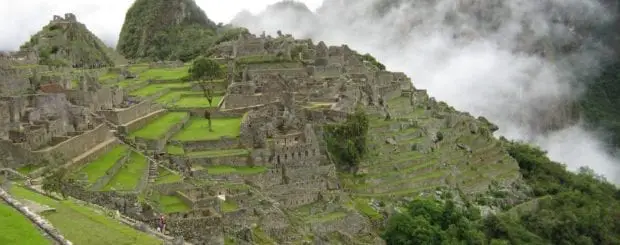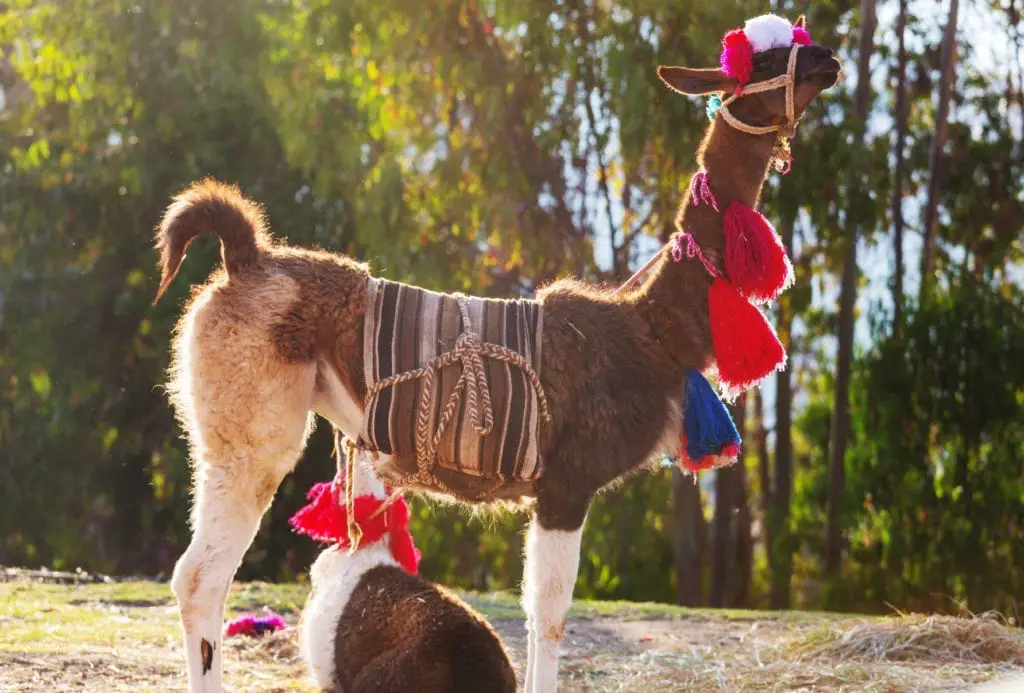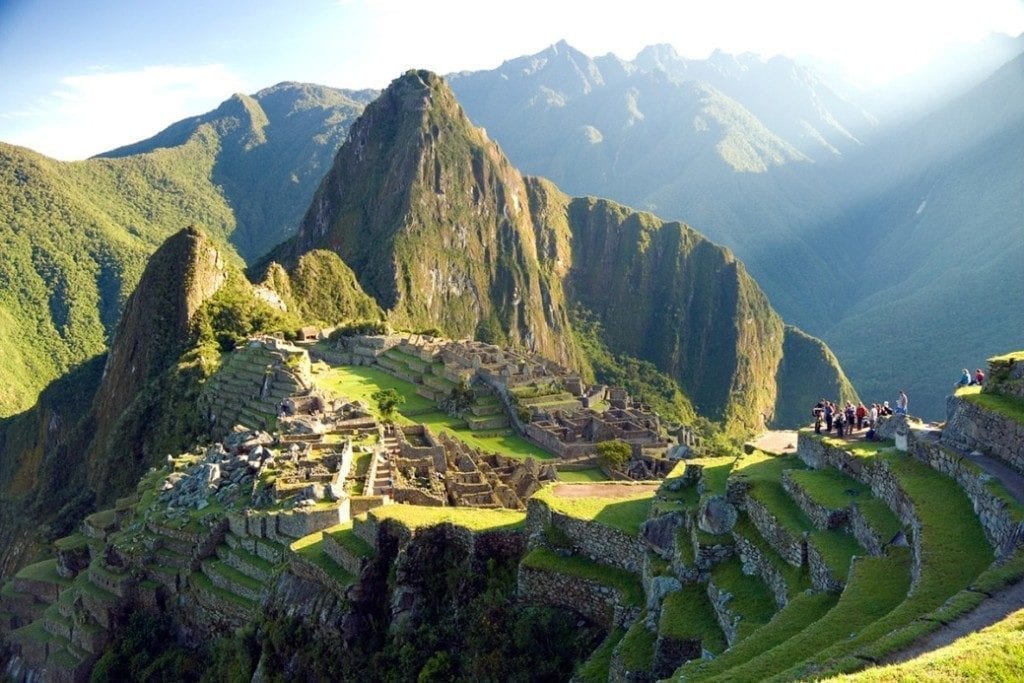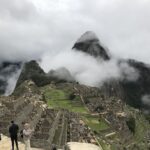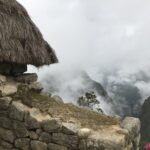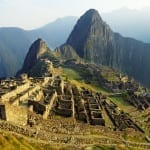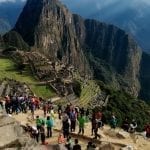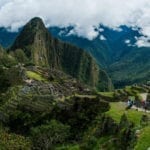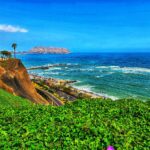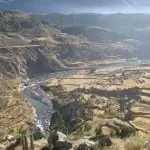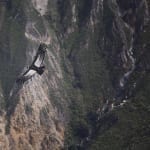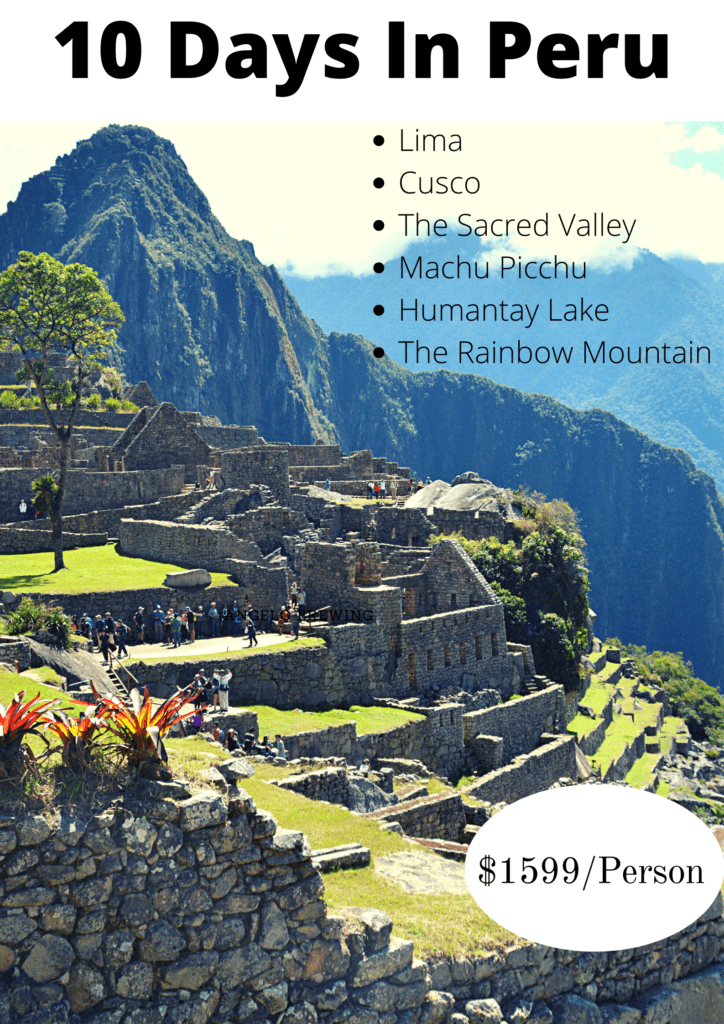22 Interesting Machu Picchu Facts
James Bustamante is Native to New York but born to Peruvian parents. He has been traveling throughout Latin America since early 2003 and finally made his home in Peru. James has made his way by eating and traveling through almost every country in Central and South America.
Last Updated on March 4, 2021 by James Bustamante
These 22 Machu Picchu facts are basic pieces of information every traveler needs to discover before taking a trip to the stone city. Let’s go over some mysterious details that go as far back as its initial construction to the more recent events happening in Machu Picchu.
The Inca citadel is definitely the most well-known structure in Peru and most likely, the most recognizable in all of The South American continent.
1. Machu Picchu vs Earthquakes
It is no secret that Peru is located on the ring of fire, a seismic area that is so large it crosses continents, and Machu Picchu is actually located near a couple of the fault lines that can be found in the cloud forest.
The Inca had lived in this region for many years and we’re very much aware of the geological adversities they faced when wanting to build here. Thanks to their building techniques, Machu Picchu itself is mostly earthquake-proof.
There have in fact been several strong quakes throughout the years but Machu Picchu is still standing. The Inca focused on reading trapezoidal-shaped doors to hold up heavy stone constructions.
The windows in Machu Picchu are built in a similar fashion and the Incan architects made sure to include bracing blocks and inward walls into their construction.
2. No, Machu Picchu Was Not Built by Aliens

This next piece on our Machu Picchu facts list usually rubs some people the wrong way. This writer believes in the possibility of outward life by the way. However, the idea of Machu Picchu is built by the locals seems like an impossible task to many amateur scholars and even some seasoned ones.
The main reasons for this come from the fact that the Inca did not have iron tools or even use the wheel (that we know of). What the Inca lacked in tools they more than made up for in two key areas.
Creative Engineering and most importantly manpower. Yes, the Inca were able to carb stone without tools we use today and the Inca empire was vast so there was no shortage of workers willing to help carry these large stones for their rulers.
3. Machu Picchu Is Not Really Ancient
Machu Picchu researchers believe the construction for the Inca citadel started under The Inca ruler Pachacuti Inca Yupanqui around the year 1450 AD.
When you compare the dates with other constructions and cultures around the world you come to realize that the Inca are more connected to recent events than something like the Roman empire.
This interesting Machu Picchu fact is why it is considered one of the “new” wonders of the world and was never part of the previous list.
4. Machu Picchu is Not Held Together by Mortar
What the Inca lacked in tools they made up for in clever engineering techniques. The Inca built all of Machu Picchu without the aid of mortar, cement, paste, etc. What the Inca did was use an old technique called “Ashlar” which basically cuts stone to exact precision.
Ashlar would allow the Inca to lay one stone perfectly in line and on top of another stone without leaving spaces or gaps in between each one.
The precision and care it took to place each stone over the other were so extreme that if you tried to slide a sheet of paper between the stones in Machu Picchu the paper would crumble. The Ashlar technique is one of the reasons why Machu Picchu is earthquake-proof! This piece of our Machu Picchu facts list plays into #3.
5. Machu Picchu is at a Lower Elevation Than Cusco
This next section on the interesting Machu Picchu facts list tends to surprise travelers. Most hikers immediately ask us if they should make sure to acclimate in Cusco before heading to their Machu Picchu hike.
They are very much surprised when we tell them that Machu Picchu is located at around 8,000 feet (2,450 meters) above sea level and Cusco is at a higher elevation of 11,250 (3,400 meters) above sea level.
This is why we will recommend heading to the Sacre Valley to acclimate and leaving Cusco for the end of the itinerary.
6. Researchers Can’t Confirm What The Inca Citadel Was Used For
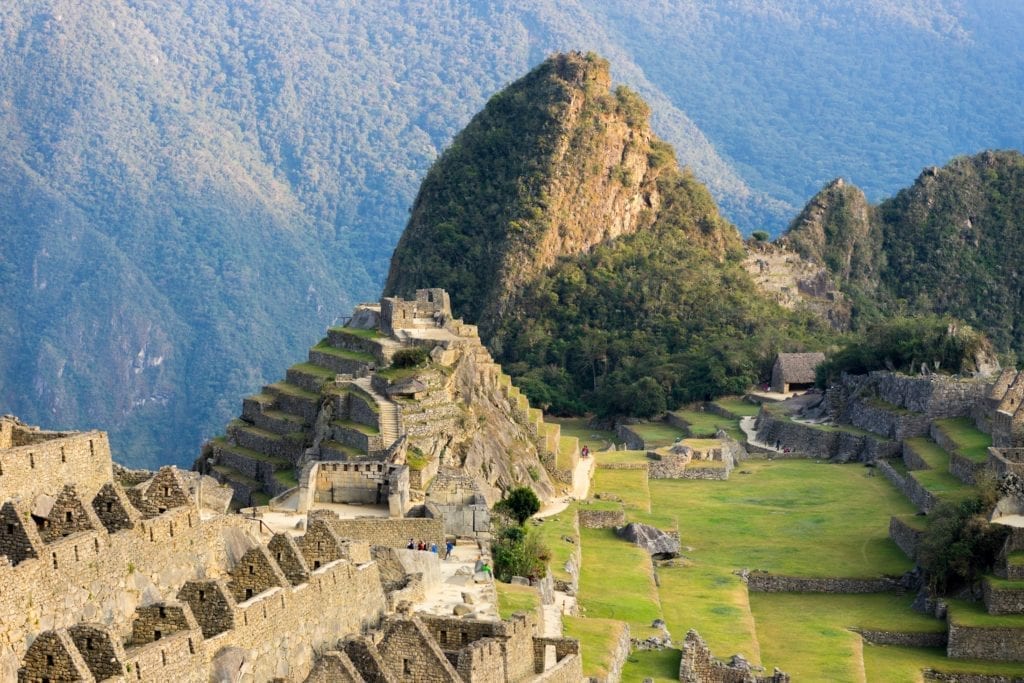
The language of the Inca was Quechua, this ancient language was merely a spoken one so there are no actual written records left by the Inca. Due to this, scholars can’t really confirm what the initial intention of Machu Picchu actually was.
We know it definitely was an important location to the Inca, the work it took to have it constructed definitely points in that direction. Some archaeologists have a theory that the ruler Pachacuti was built as a type of summer home or royal estate.
Another group of scholars believes that Machu Picchu was more of a focal point for high-ranking, elite leaders, engineers, and scholars of the Inca empire to get together.
7. Machu Picchu Was Not “Discovered”
Next on the list of Machu Picchu facts is a common mistake most people make. Machu Picchu was not “discovered” by the explorer Hiram Bingham.
The local people of the region already knew Machu Picchu existed and exactly where it was. One of the guides that took Hiram Bingham to the Inca site in 1911 was actually an innkeeper called Melchor Arteaga and when they arrived there were farmers still using the Inca terraces to cultivate crops.
What Hiram Bingham did was secure financing to bring recognition to Machu Picchu, he did this through his many elite contacts and was even able to get the National Geographic foundation to show interest in Machu Picchu. Without his very fortunate additional Machu Picchu might not be what it is today.
8. Machu Picchu Translates to “Old Mountain” In Quechua
The next piece of our Machu Picchu facts list is the name Machu Picchu translates to “the old mountain”. The name is actually in the language the Inca used called Quechua. Machu means “old person” and Picchu translates to “peak” or “mountain”. The Incas were apparently quite descriptive with their names.
You will find that all of the Inca ruins around the country are called by their original name in a local language like Quechua (or Aymara in other regions).
Quechua is not a dead tongue, once you are in places like Cusco you will find that many locals still speak their native tongue.
9. LLlamas Aren’t From Machu Picchu
This Machu Picchu fact might hurt a few feelings but Llamas and Alpacas are not actually native to this region.
The Inca definitely brought these camelids to the area but llamas and alpacas like to live at a much higher elevation than what we find in the cloud forest they are most comfortable at over 13,000 feet (4,000 meters) above sea level.
So the next time you want to see the Llamas and Alpacas in Machu Picchu remember that originally they were brought in by the Inca.
10. People Made It a “Thing” to be Nude in Machu Picchu
In recent years there was a large influx of incoming hikers into Machu Picchu that seems to follow “nude tourism”. So in 2014 getting your picture taken while nude in Machu Picchu was a thing and it was one of the worst challenges anyone could have thought of.
Luckily, the trend ended as quickly as it started and hikers stopped running around naked in the Inca citadel. There was also a streak of squatting in Machu Picchu more recently where people would hide in Machu Picchu and wait for the park to close, wake up the next day, and leave.
11. Peru vs Yale
The investment Hiram Bingham made into promoting Machu Picchu also allowed him and his team to take several Inca artifacts from the Machu Picchu ruins. They were collected in the thousands and sent to Yale university between 1912 and 1915.
You can find pieces like Inca jewelry, silver, ceramics, and even human bones among what was taken to the USA. It turns out that Peru wanted their Inca treasures back and decided to contest the artifacts with Yale.
The dispute lasted a full century but eventually, some artifacts began to be taken back to Peru in 2012. How many items will eventually return to their ancestral home is still unknown.
12. There are Only Two Routes to Machu Picchu
Part of the attraction travelers has towards Machu Picchu rests in how off the beaten path and remote the Inca construction actually is.
There are only two ways to reach Machu Picchu, the first is the most common route that includes taking a train from Cusco to Aguas Calientes through the Sacred Valley and then taking the bus up to the Machu Picchu entrance.
The second option is to take the 4 day Inca trail that takes hikers through the Andes and into Machu Picchu via the Sungate.
13. Machu Picchu is Not in Cusco
This is yet another common misconception travelers have when they first want to know about an itinerary. Machu Picchu is located in a section called the cloud forest.
This green and lush area is located between the Andes and the Amazon rainforest, this gives it a rather interesting climate.
Cusco will seem more like a mountainous area surrounded by some vegetation while the cloud forest will seem more like a humid rainforest. You will see flora and fauna that would not survive in the higher elevation of Cusco.
14. The Sun Gate Was the Only Entrance for The Inca Elite

The main entrance to Machu Picchu used to be the Int Punku or Sun gate that leads to the city via the classic 4 day Inca trail.
This is why there are so many Inca ruins along the way to Machu Picchu when we hike to the Andes, there were temples and checkpoints the Inca needed to pass before getting to the citadel.
Today the majority of travelers enter the complex through the main gates accessed through the town of Aguas Calientes.
15. We Don’t Know Exactly Why It was Abandoned
Considering the amount of time spent building Machu Picchu the Inca did not really stick around for too long. Apparently, the Inca city was only populated for around 100 years before it was eventually abandoned.
The main theory is that the Inca left due to an outbreak of smallpox brought to Peru by the Spanish Conquistadors. This would make sense as to why they left in such a hurry but since there are no written Inca records we might never know.
16. The Spanish Never Reached Machu Picchu
The Spanish arrived in Peru and conquered the Incan empire in the 1,500’s however the Conquistadors never actually reached Machu Picchu. The name “the lost city of the Inca” seems to have more than one origin.
The first would come from the city being covered with rainforest vegetation before Hiram Bingham arrived. The second origin seems to stem from the Spanish never reaching the Inca citadel because it was hidden between the Andes and the Amazon rainforest.
17. Machu Picchu is A World Heritage Site
It was only in 1981 that the local government decided to make Machu Picchu city a historic national Sanctuary, only two years later UNESCO also assisted in Machu Picchu’s popularity by declaring it a World Heritage Site.
In more recent times there was a poll in 2007 which put Machu Picchu up against other world heritage sites in order to see which would be voted as one of the New Seven Wonders of the World. Machu Picchu came out the victor later that year and its popularity skyrocketed afterward.
18. The 2 Secret Hikes In Machu Picchu
There are two secret hikes hidden in the Machu Picchu complex and no we are not talking about the Huayna Picchu or Mount Machu Picchu hikes. There is a hike that leads to the Inti-Punku (Sun Gate) to Machu Picchu and one that takes you to the Inca bridge.
Both of these secret hikes are included in the basic Machu Picchu permit so there are no additional hiking permits necessary. If you have the time, we recommend the hike to the Sun gate but if you are looking for an easier route then go for the Inca bridge.
19. Machu Picchu Passport Stamp
On the way out of the complex after you have already gone through the Machu Picchu tour, make sure you get your passport stamped on the way out.
It may not have any official value but if you have pages to spare on your passport, the stamp is a nice item to add to your scrapbook of places you’ve visited.
20. The Inca City is a No-Fly Zone
Back in the early 90’s the Peruvian government would allow flyover tours of the Machu Picchu sanctuary, so if you had the financial backing to do it, you would be able to simply fly to and from Machu Picchu.
This eventually ended since the helicopter traffic was causing damage to the local wildlife. Today the Sanctuary, as well as its surrounding, is a complete no-fly-zone.
The only time in recent years where helicopter travel has been allowed was during heavy rain due to “El Nino” where people had to be airlifted out of Aguas Calientes.
21. The Two Peaks Overlooking Machu Picchu
There are two additional hikes within Machu Picchu that require separate permits to have access to them. The first is the Huayna Picchu hike and can be classified as a rather vertical climb up a scary staircase.
Most of the postcard-style photographs of Machu Picchu are taken from this particular hike. Huana Picchus’s nickname is the “death stairs” due to how high you are and how narrow the path is.
The second hike would be the Machu Picchu mountain route, instead of it being a vertical hike it is similar to a winding path through the mountain. You reach the top and can also get an amazing aerial view of Machu Picchu.
22. Machu Picchu Has Been Visited by Hollywood and Bollywood
Throughout the years Machu Picchu has been visited by many celebrities such as Jim Carey, Mick Jagger, Cameron Diaz, Zack Effron, Pablo Neruda, and many more. I
t has also had its share of visits from titans of industry such as Bill Gates in 2007 have taken the Machu Picchu guided tour.
There was even a music video from a popular Bollywood film made in Machu Picchu. Strangely enough, the song was named Kilimanjaro although it was filmed in Inca city.
Conclusion
We hope you enjoyed reading up on all of these interesting Machu Picchu facts every traveler should know because we enjoyed writing them.
If you want to go ahead and visit Machu Picchu or any other part of Peru be sure to contact our travel advisers. We will gladly help plan your next Peru travel experience.
Frequently Asked Questions About Machu Picchu Facts
Is Machu Picchu sliding down the mountain?
Yes, Machu Picchu is sliding down the side of the mountain due to erosion and seismic activity. The actual complex of Machu Picchu itself is resistant to earthquakes due to its building techniques.
How many hikes are inside the Machu Picchu complex
There are four major hikes within Machu Picchu. The Inca bridge, The hike to the Sun gate, The Huayna Picchu hike, and the Machu Picchu mountain hike.
Where was Machu Picchu Constructed?
The Inca began building Machu Picchu in the year 1450.
Why was Machu Picchu abandoned?
Machu Picchu seems to have been abandoned due to an outbreak of smallpox brought in by the Spanish.
Where are Llamas from?
Llamas and Alpacas are native to the highlands in South America, Peru in particular.
Where is Machu Picchu?
Machu Picchu is located in the cloud forest 2 hours by train from the city of Cusco.
Is Machu Picchu at a higher altitude than Cusco?
No, Machu Picchu is actually located at a lower elevation than Cusco by around 2,300 feet (700 meters).
Was Machu Picchu built by Aliens?
No, the Incas were perfectly capable of building Machu Picchu due to their engineering techniques and the massive manpower they managed.
